Sure, guitarist Mike Baggetta and punk bass legend Mike Watt have cool gear. Watt’s got a signature Reverend Wattplower bass in root beer burst, and Baggetta wields his custom Koll Tornado and Benson amp rig like Gandalf’s staff—all in service of creating flamethrower tones in their wild, no-holds-barred performances.
The trio mssv is an underground supergroup. They’re not playing the local enormodome, but each musician has a storied career and the ability to leap musical conventions in a single bound, even while rocking like hell … or playing compositions with sections that ricochet from Coltrane to Martian terrain.
The group sprung from guitarist Mike Baggetta’s dream of an ideal, omnivorous band—one that could navigate any kind of musical or sonic path, much as Baggetta has done himself, whether playing with other artists or solo. His first choice of bassist was Mike Watt, a legendary indie music figure who has been releasing daring rock and improv albums for decades, starting with the highly influential ’80s and ’90s outfits the Minutemen and fIREHOSE. And while mssv’s debut album, 2019’s Wall of Flowers, was recorded with the foundational rock drummer Jim Keltner, Keltner’s disinterest in touring caused Baggetta to seek a replacement in Stephen Hodges, one of the few sticks players who can match Keltner’s intention and a brilliant artist in his own right, with decades supporting Tom Waits, Mavis Staple, and other legends.
On the road behind their latest recording, Human Reaction (one of my picks for best albums of 2023), mssv stopped at the Blue Room in Nashville’s Third Man Records complex in late October, where their wily creativity ignited the place. But at soundcheck, Baggetta and Watt explained to the PG team exactly why they dig their rigs.
Brought to you by D'Addario:
https://ddar.io/wykyk-rr
https://www.daddario.com/XPNDRR
King Koll

This custom guitar by Saul Koll—a variation on the Tornado model Koll first built for David Torn—is perfect for Baggetta’s whammy-heavy approach, which makes his playing sound more vocal. It’s one of three Kolls he owns. It’s got cylindrical Hipshot locking tuners, a 25 1/2" neck, a Strat-like bridge, master tone and master volume dials, a 3-way switch for its Curtis Novak single-coils, and a mute switch, too. Middle position is his favorite spot. His strings: D’Addario XT’s, .010 to .046.
Ring o' Fuzz
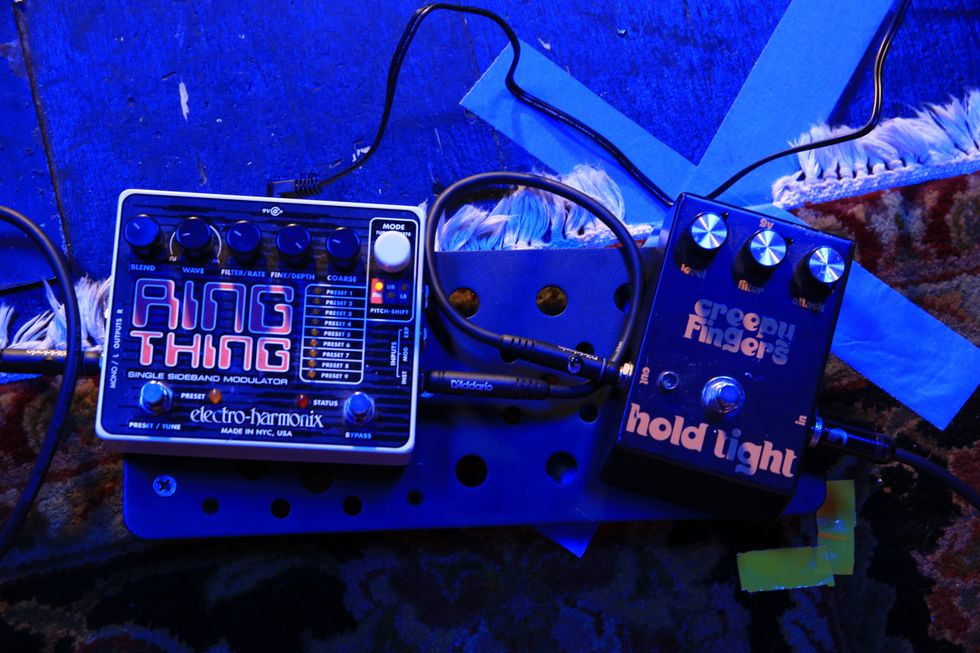
Here’s a Creepy Fingers Hold Tight fuzz (“I like how it kind of folds over on itself when you dig in on it,” Baggetta says.) and an EHX Ring Thing, which digitally creates the greatest hits sounds of ring modulation as well as weirder, fractured tones and pitch shifting. Baggetta sometimes stomps through all of the Ring Thing’s presets for solos, constantly changing tones and pitches as he rips.
Say Wah?
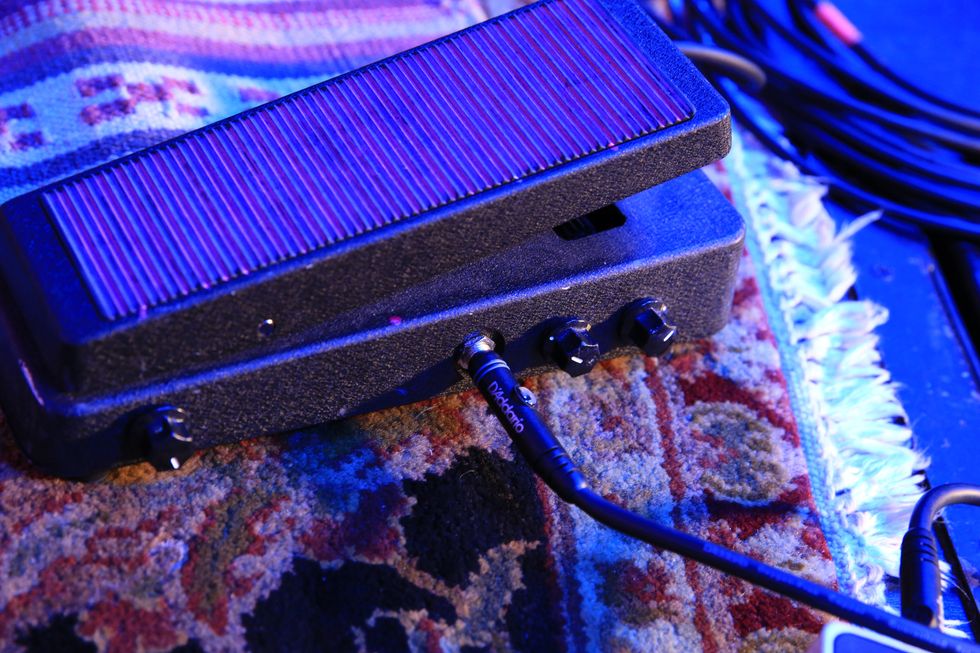
At Mike Watt’s request—and for playing the Stooges’ “1969”—Baggetta got a Wilson Effects Freaker Wah V2. The guitarist explains that he’s not a big wah fan, but this model has synth-filter-like qualities that are perfect for his sonic playground, creating overtones that some somewhat like Tuvan throat singing at times.
Detour, Amp Ahead!
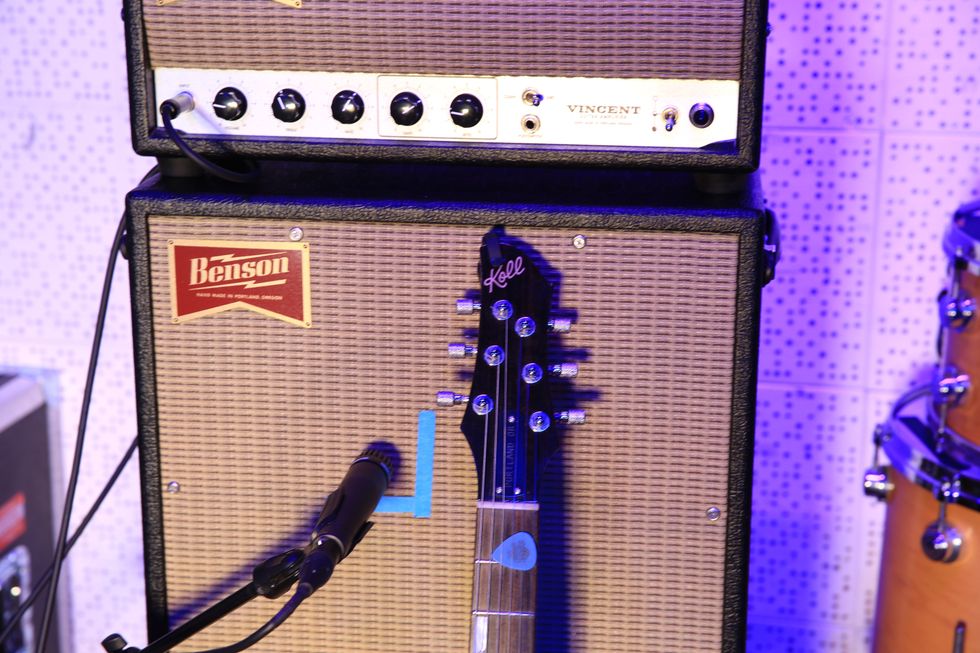
From there, Baggetta takes the line out to the dirt channel of his amp, a Benson Vincent, made in Portland, Oregon, by Chris Benson. “I think of it as the world’s greatest Fuzz Face,” he says. It’s got 30 watts of output power and loads of character. The amp blends two Benson circuits: the 1-watt Vinny and the 30-watt Chimera. The power tubes in the Chimera are EL84s and the Vinny side is a single EL84, and there is a 6L6, but Baggetta says, “I don't know what that does.” The preamp tubes are 12AX7s.
Remember the Panda!
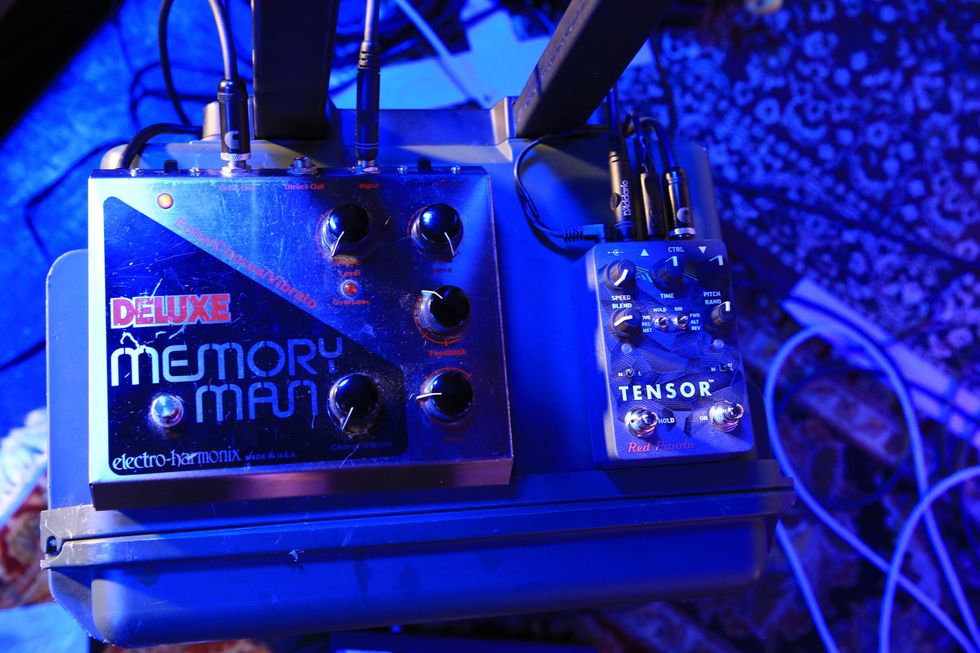
The final entries in Baggetta’s pedal line-up are an Electro-Harmonix Deluxe Memory Man and a Red Panda Tensor. The signal flows from the Benson into the Tensor, which he uses for glitch sounds, harmonizing, and overdub mode, among other feats. His Memory Man adds space—the final frontier.
Wattplower Power
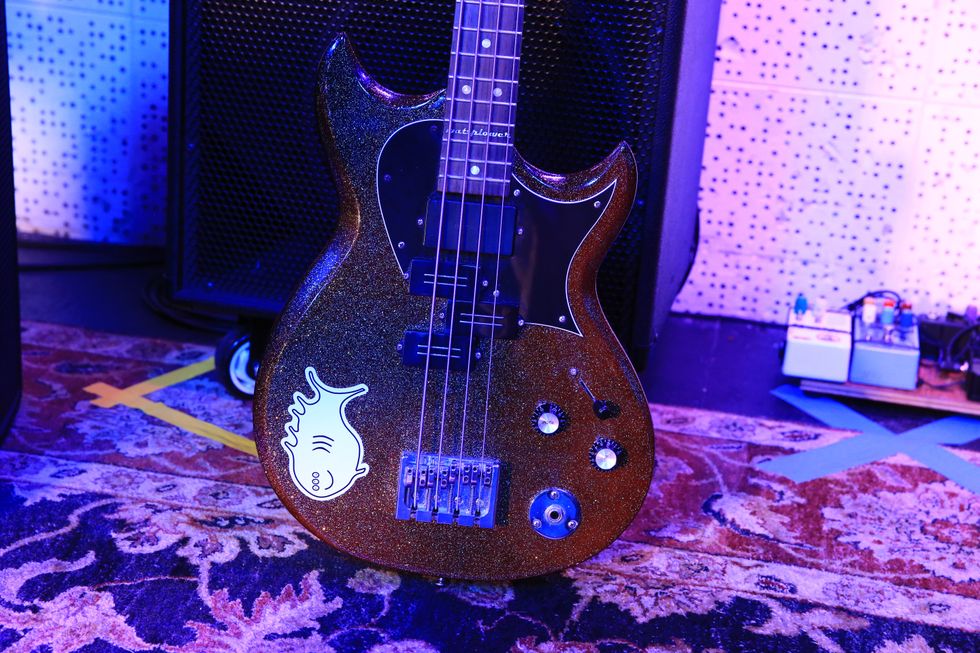
For this tour, the legendary bassist is playing his new signature Wattplower Mark II bass, built by Reverend, in root beer sparkle. This 4-string for a king has one-and-a-half more pickups than the first, single-pickup version of the Wattplower, Watt explains. He went to short-scale basses in the ’90s, and his faithful Gibson EB-3 inspired the Wattplower’s neck. It’s got extra grind thanks to P-Blade bridge and Rio Grande Pitbull pickups. The neck is 3-piece korina, and the body is also korina, and it's got volume, tone, and 3-way controls, of course. It’s also got Hipshot Ultralight tuners, a 30" scale, and a rosewood fretboard. The bridge is also Hipshot, and Watt’s is a top-loader.
Wattplower II
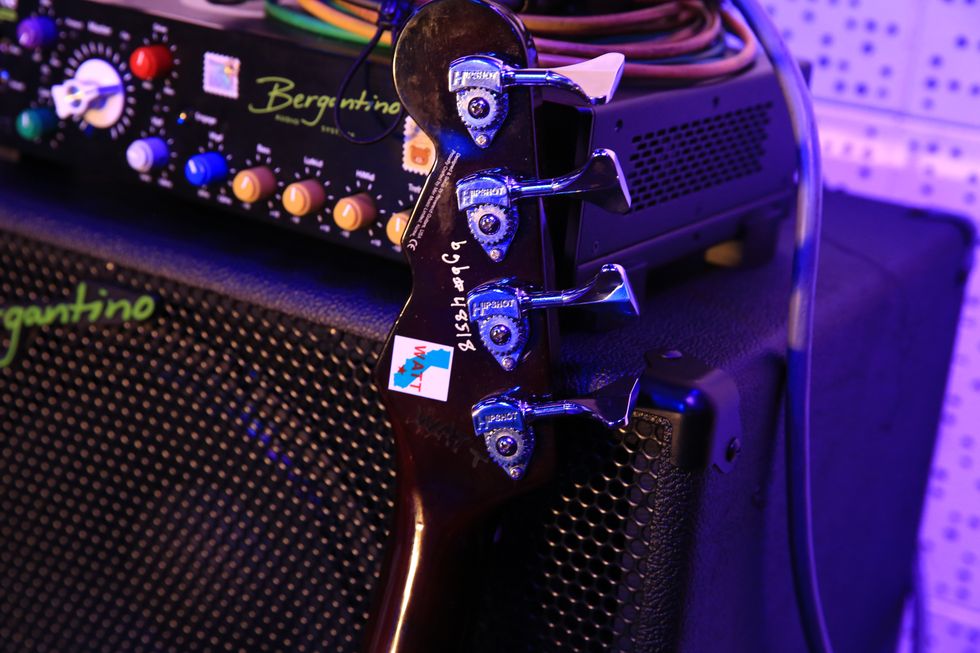
Here’s a close-up look at the Wattplower Mark II’s headstock and tuners.
Wattplower ID
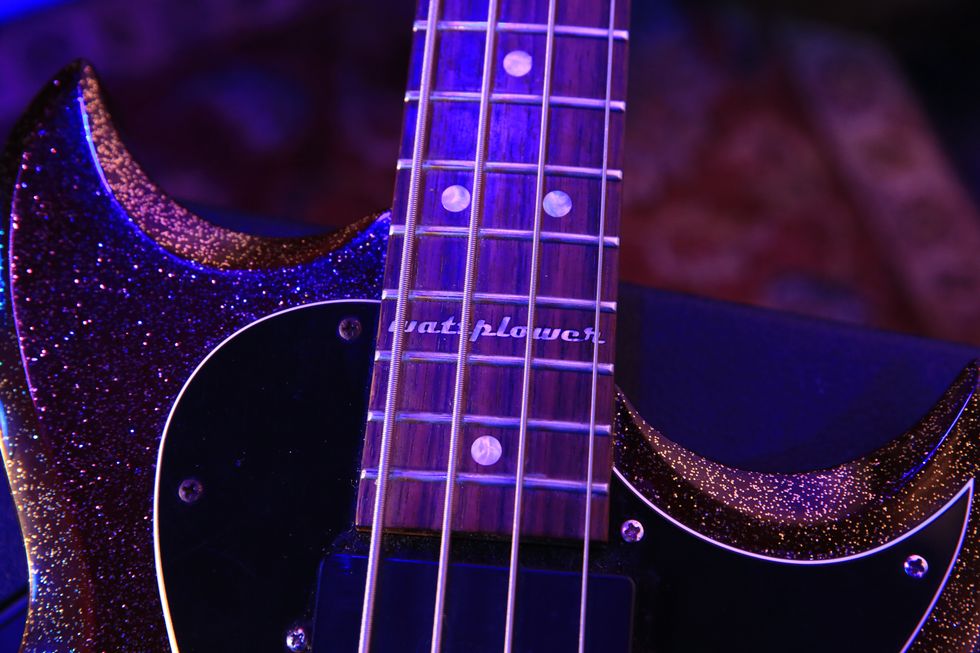
Here’s how you know you’re playing a genuine Reverend Wattplower!
Wattplower, the Sequel
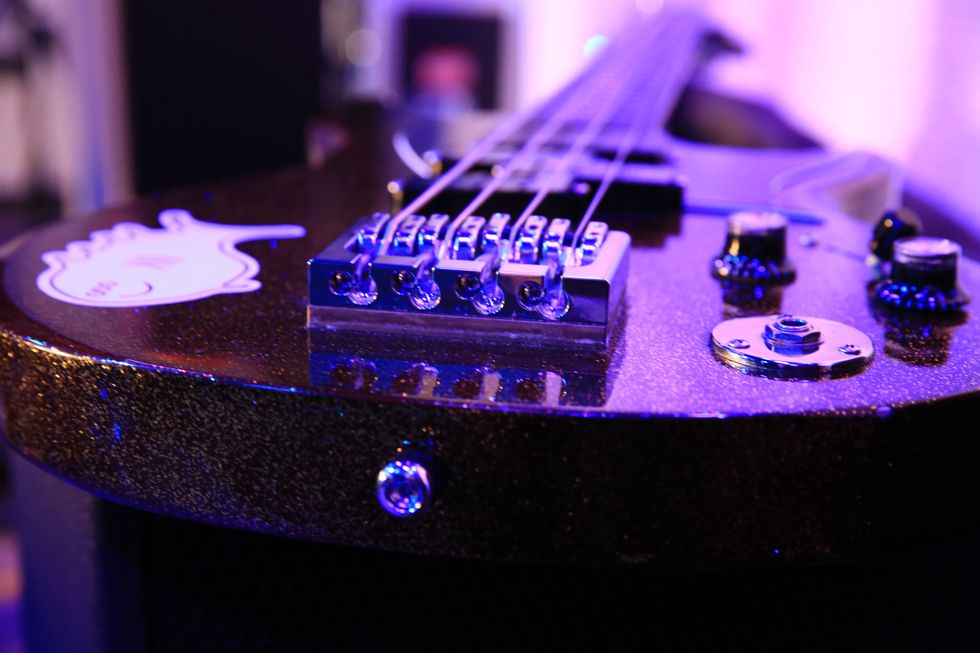
And here’s a look at the bridge, which comes in optional through-loading and top-loading styles.
Amp-phigory
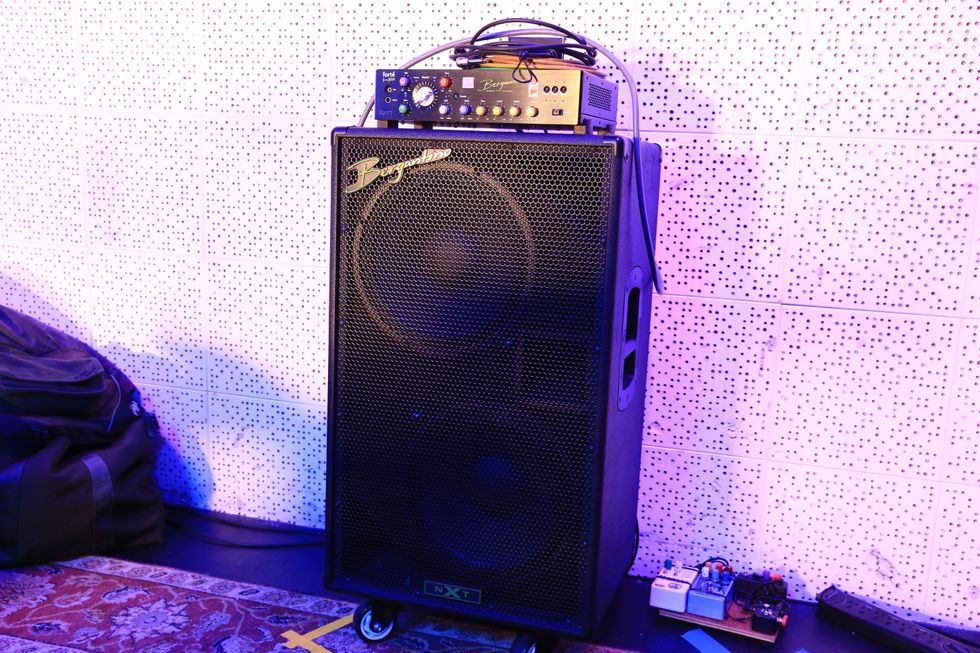
“These days,” Watt says, “class D is the way to go.” And so, he plays a Bergantino Forte rated at 800 watts, into a Bergantino with two 12" neodymium speakers and a horn.
Stomp to Romp
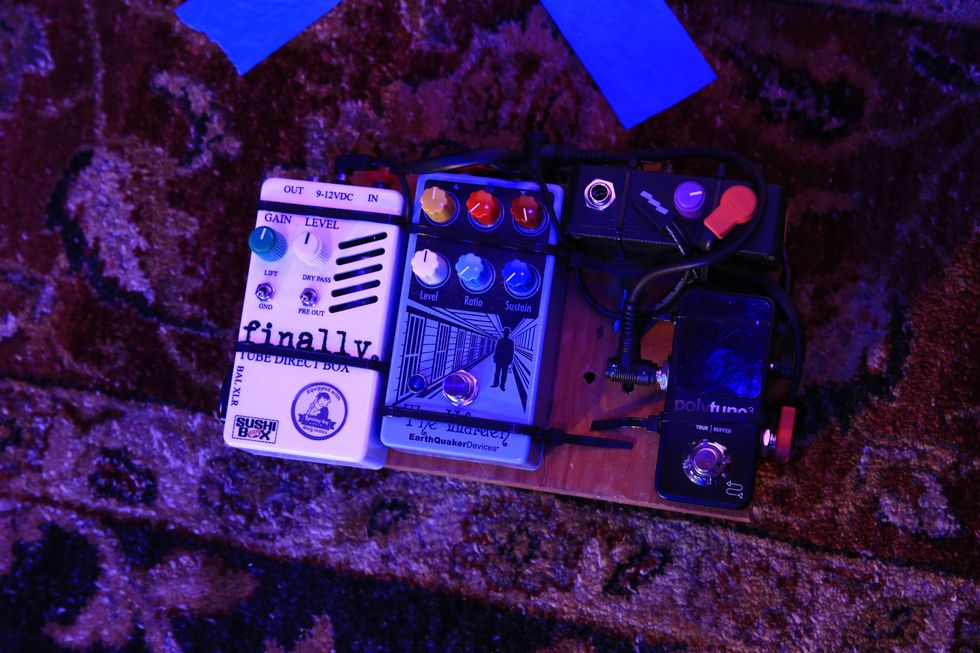
Broughton Audio makes the high-pass filter loaded atop Watt’s board, which also has a EarthQuaker Devices The Warden optical compressor and a Sushi Box Effects Finally tube DI that functions as a preamp. Simple, but deadly. Oh, and there’s also a TC Electronic Polytune!
![Rig Rundown: mssv's Mike Watt & Mike Baggetta [2024]](https://www.premierguitar.com/media-library/rig-rundown-mssv-2024.jpg?id=50992017&width=1200&height=675)




![Devon Eisenbarger [Katy Perry] Rig Rundown](https://www.premierguitar.com/media-library/youtube.jpg?id=61774583&width=1245&height=700&quality=70&coordinates=0%2C0%2C0%2C0)
























































